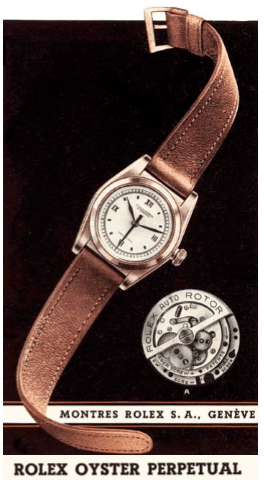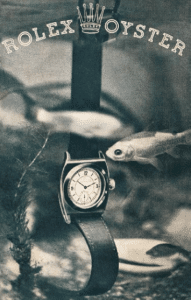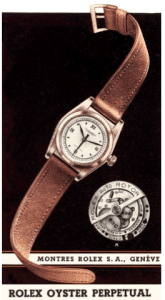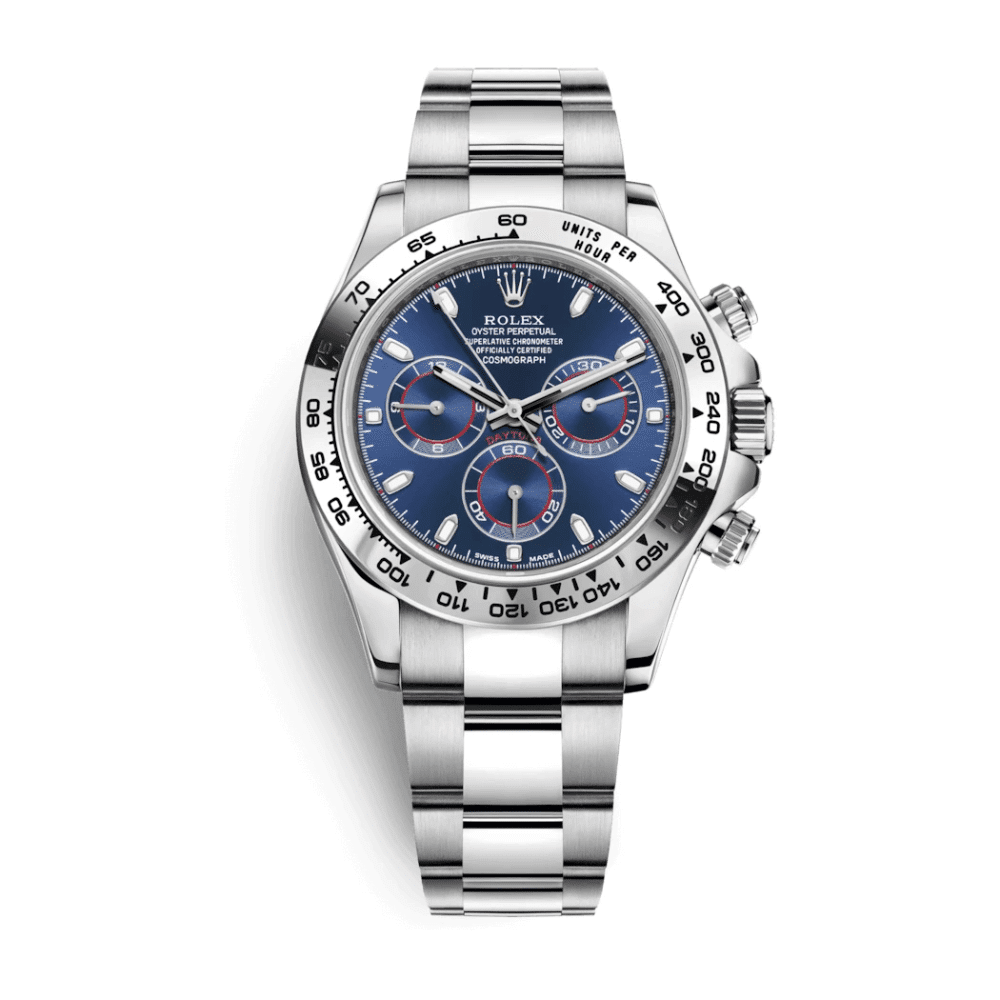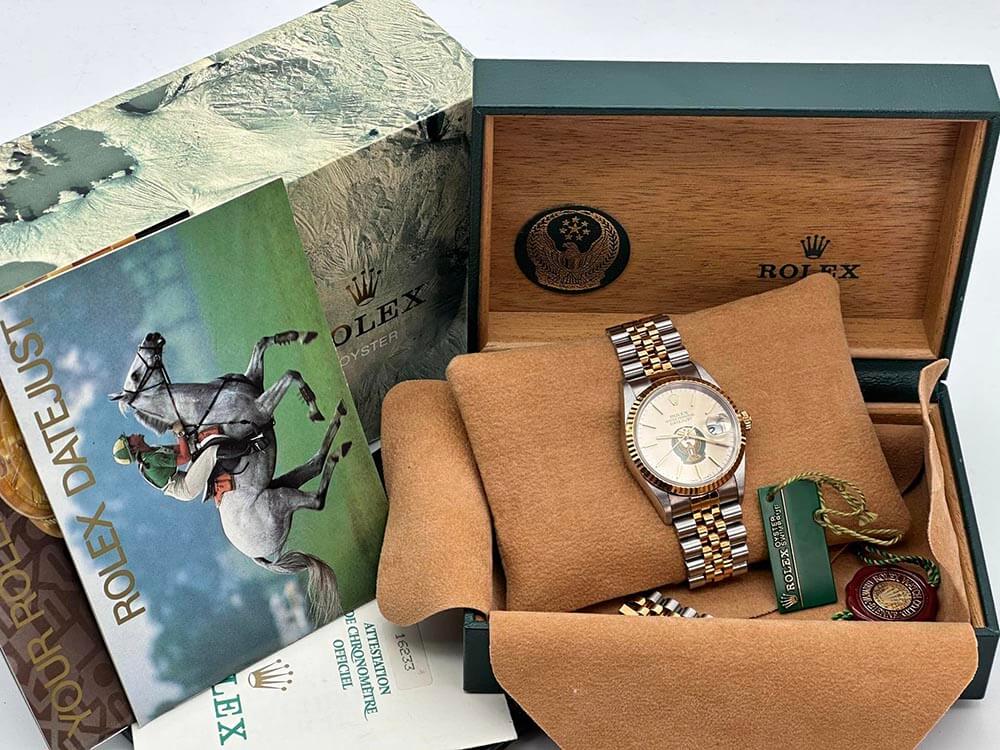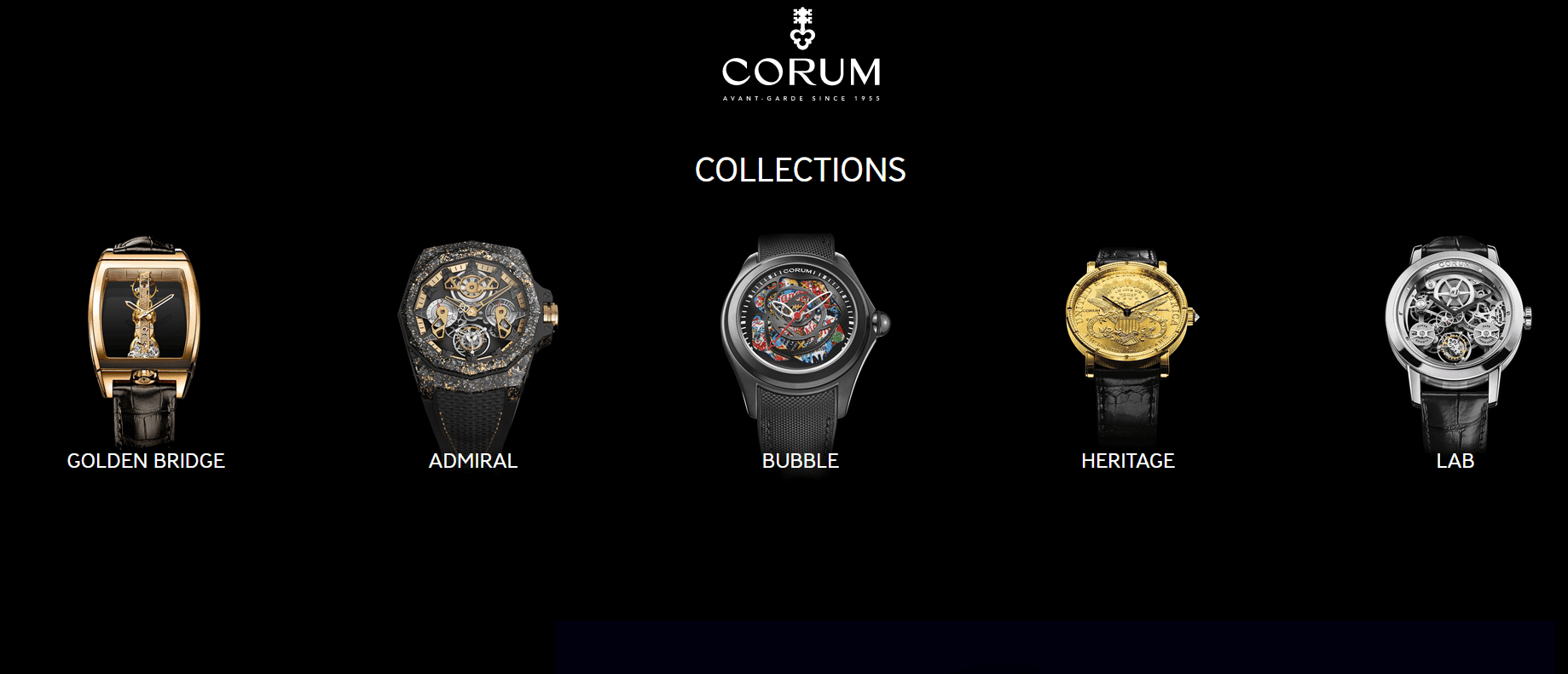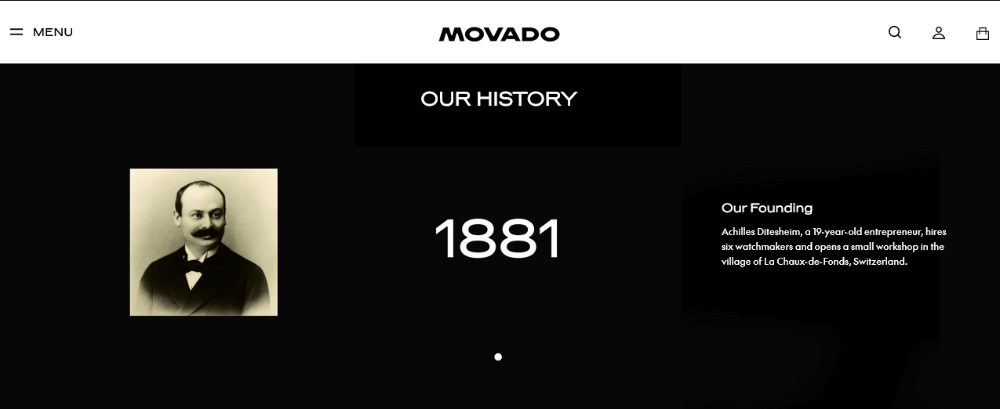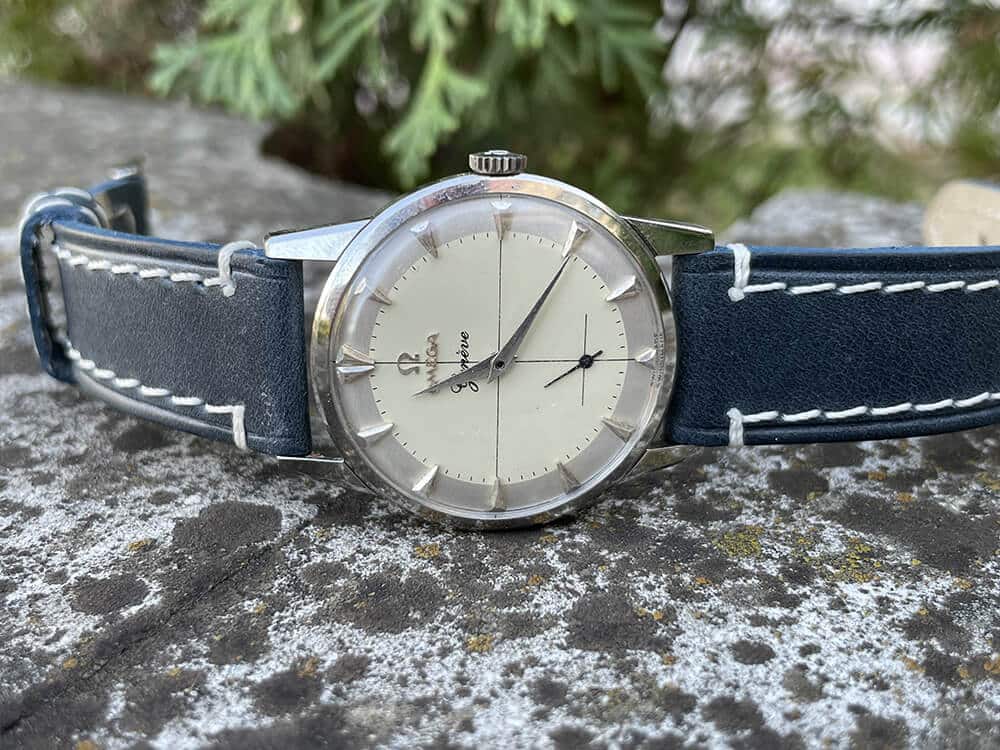1926 Rolex creates the first really waterproof case in the world.
The famous OYSTER is born. This registered name is a synonym of the watertight closure, which works in and out of water preventing the penetration of impurities, moisture, dust, … The Oyster watch combines an extremely sturdy case, with a case back and a winding crown, all absolutely waterproof.
The patented TWINLOCK winding crown, is wound against the case and makes this generally very vulnerable point of the watch, extremely resistant. From a Rolex catalogue of 1981 we can read: OYSTER The Oyster is perfectly at home underwater. For Rolex, the word Oyster is a symbol as well as a registered trademark. All Rolex Oysters are guaranteed waterproof up to a depth of at least 50 m.
This guarantee is extended to 100 m for the Explorer, to 300 m for the Submariner and to 1220 m for the Sea-Dweller with helium escape valve (Rolex patent).
From a Rolex catalogue of 1992, instead, we can read: OYSTER The Oyster, true to its name, is perfectly at home underwater. For Rolex, the word Oyster is a symbol as well as a registered trademark. All Rolex Oysters are guaranteed waterproof up to 100 m. This guarantee is extended to 300 m for the SUBMARINER, and to 1220 m for the SEA-DWELLER, with helium escape valve. The Oyster case was invented and patented by Rolex in 1926.
1927 A young English woman, named Mercedes Gleitze, swam across the icy waters of the English Channel wearing a ROLEX OYSTER PRECISION on her wrist. The watch, produced in 1926, made from 9 ct gold with octagonal case (31×27 mm), still worked perfectly after the 15 hours and 15 minutes swim. In the official website of the Company we can read that this event “marked the beginning of a long tradition: the linking of Rolex watches with exceptional individuals”.
1931 A new chapter in watch history: the ROLEX OYSTER PERPETUAL is born, the first waterproof selfwinding watch. From a 1954 Rolex catalogue we can read: “The main aim of the manufacture of a selfwinding watch is not to avoid the daily task of manual winding. The mainspring tension of such a watch is permanent, because the selfwinding mechanism keeps the watch constantly FULLY wound and guarantees in this way a regular non variable strength transmission, which ensures maximum accuracy of the movement.
The Rolex Oyster Perpetual was launched on the market in 1931 and its appearance marked an important date in watchmaking history. Rolex technicians had found, for the first time, a fully satisfying solution to the problem watchmakers had been working on for centuries. The solution was named “Rotor Rolex” and consisted of a mass or a semicircular weight, which swings on its axis back and forth silently and without shocks, under the force of gravity. In this way Rolex was able to eliminate shocks and bumps, which compromised the correct functioning of the precious mechanism, and remove any possibility of breaking the winding mainspring.
The winding is automatically driven and accurately controlled, therefore making it impossible to over or underwind the mainspring: thus giving higher accuracy.” The automatic movement is mainly identified with a type of watch which attracts the attention of the whole collectors’ world, it is a model which made watch history: the “BUBBLE BACK”, an Oyster usually called “OVETTO” in Italy. This nickname derives from the rounded shape of the case back, just like an egg. It will be produced for over 20 years in different materials, innumerable dial variants and references.
